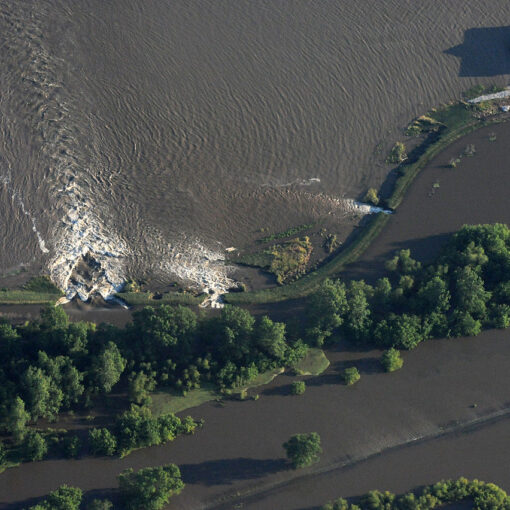The Sabin Center today published model federal legislation to advance safe and responsible ocean carbon dioxide removal (CDR) research in U.S. waters. Controlled field trials and other in-ocean research is critical to improve scientific and societal understanding of CDR techniques that could help the U.S. reach its climate goals. However, existing legal frameworks were not designed to regulate ocean CDR and, in some cases, unnecessarily or inappropriately restrict needed research. The purpose of this proposed model legislation is to establish clear and efficient permitting regime for in-ocean CDR research. At the same time, the model legislation builds in consultation, monitoring, and other safeguards to ensure research occurs in a scientifically-sound manner and minimizes potential risks to the environment and communities.
In the Paris Agreement, 193 countries, including the U.S., committed to “[h]olding the increase in global average temperatures to well below 2oC” and ideally to 1.5oC above pre-industrial levels. Modeling shows that carbon dioxide emissions must reach net zero by 2050 or 2070 to reach these temperature goals. In the near term, the U.S. has committed to reducing greenhouse gas emissions by 50 to 52 percent by 2030. The U.S. has also developed a long-term strategy for achieving net-zero greenhouse gas emissions by 2050. Rapid decarbonization is critical to achieving all of these goals, but the science is now clear that CDR will also be needed to reach net zero emissions. The IPCC has calculated that it will take somewhere between 100 and 1000 gigatonnes of CDR over the rest of this century to avoid passing the 1.5 degree target.
Initial interest in CDR has focused mostly on land-based techniques and ocean CDR techniques are comparatively less well-studied. But land-use conflicts, cost constraints, and environmental impacts associated with land-based techniques have increased interest in ocean CDR. Some forms of ocean CDR will almost certainly be a critical part of the toolkit for achieving climate goals around the world and in the U.S.
In 2022, the U.S. National Academies of Sciences, Engineering, and Medicine (NASEM) published a report that concluded that “ocean holds great potential for [additional] uptake and longer-term sequestration” of carbon dioxide. Scientists have proposed several different ocean CDR techniques that extract carbon dioxide from the atmosphere and durably store it. They include ocean fertilization, artificial upwelling, seaweed cultivation, ocean alkalinity enhancement, and electrochemical ocean capture. The techniques are further described in the model law.
Further research, including controlled field trials, is urgently needed to fully evaluate each ocean-based CDR technique. Important scientific questions remain about the techniques’ effectiveness in removing carbon dioxide and the durability of any associated carbon storage, the scalability of the techniques, the environmental and social risks they might present, and their potential co-benefits. Many of the remaining scientific questions can only be answered through in-ocean research and, in some cases, relatively large-scale or long-duration field trials may be necessary.
Background on the Legal Framework
We have previously published white papers on the U.S. and international legal frameworks applicable to ocean fertilization, artificial upwelling and downwelling, seaweed cultivation, and ocean alkalinity enhancement. We also have a forthcoming book that provides more detail on the applicable international laws and domestic laws in seven countries in North America, Europe, and Asia.
Our prior research shows that, currently, in the U.S., there is no specific legal framework for in-ocean CDR research. Unless such a framework is developed, research projects will be regulated under a variety of general environmental laws, which were developed with other activities in mind and thus are not well suited to facilitate and regulate ocean CDR. Prior studies indicate that, under existing law, some ocean CDR research projects may be subject to multiple overlapping or duplicative permit and other requirements. The time, cost, and complexity associated with navigating those requirements could hinder or entirely prevent some needed ocean CDR research. Conversely, other ocean CDR research may not be adequately regulated under existing law, presenting environmental and community risks.
The Model Law
The model legislation published today lays out a proposed new legal framework for ocean CDR research in the U.S. The framework is designed to achieve the dual goals of facilitating needed ocean CDR research, while also ensuring that research occurs in a scientifically sound, safe, and responsible manner. Some of the key issues addressed include:
- Distinguishing ocean CDR research from deployment: The model law distinguishes between research, undertaken for the purpose of advancing scientific understanding, and deployment, which is defined to mean large-scale projects. The model law only applies to research projects.
- Federal authority over ocean CDR research: The model law provides that a single federal agency (described in the legislation as the “lead agency”) will be solely responsible for regulating all aspects of ocean CDR research in all U.S. ocean waters, including state ocean waters.
- Defining national research goals for ocean CDR: The model law provides for the establishment of an Interagency Working Group to develop and periodically update a national plan for ocean CDR research. The Interagency Working Group would include representatives of key federal agencies with expertise or an interest in ocean CDR research.
- Encouraging regional planning for ocean CDR research: The model law designates Regional Research Councils, made up state and tribal representatives. The Regional Research Councils are authorized to develop research programs to regionally implement the national plan developed by the Interagency Working Group (among other things).
- Identifying priority areas for ocean CDR research: The model law directs the lead federal agency to designate preferred zones for ocean CDR research zones, with input from the Regional Research Councils and other key stakeholders. Research projects within designated zones will be subject to expedited review and permitting by the lead federal agency.
- Permitting of ocean CDR research: The model law requires any person or entity wanting to undertake an ocean CDR research project in U.S. ocean waters to obtain a permit from the lead federal agency. The lead agency is authorized to issue permits where it determines that the scientific merit of a research project outweighs any potential negative environmental or other effects of that project.
- Providing for meaningful input by tribal, state, and local governments and communities: While the model law provides for exclusive federal oversight of ocean CDR research, it requires close collaboration between the lead federal agency and tribes, states, local governments, and others.
- Ensuring adequate funds for environmental cleanup: The lead agency may require that a person holding a permit maintain a bond or other financial assurance to ensure that funds are available for the cleanup of environmental harms that might be caused by a research project.
The model legislation is split into 14 sections, with notes in between explaining the key choices made by the authors. The model legislation is intended as a comprehensive bill that could be passed by Congress. However, sections of the model legislation may be severed and work on their own, depending on the political choices involved. Further, although intended as a federal bill, states interested in developing ocean-CDR specific legislation may want to draw from the permitting rules established in the model legislation.
The authors developed the model legislation with input from scientists, policymakers, lawyers, and others with expertise in ocean CDR. The authors would like to thank all those who helped in shaping the model law and Ocean Visions for their generous support in providing funding for the work.
The model legislation, along with an introduction and explanatory notes, is available here.







